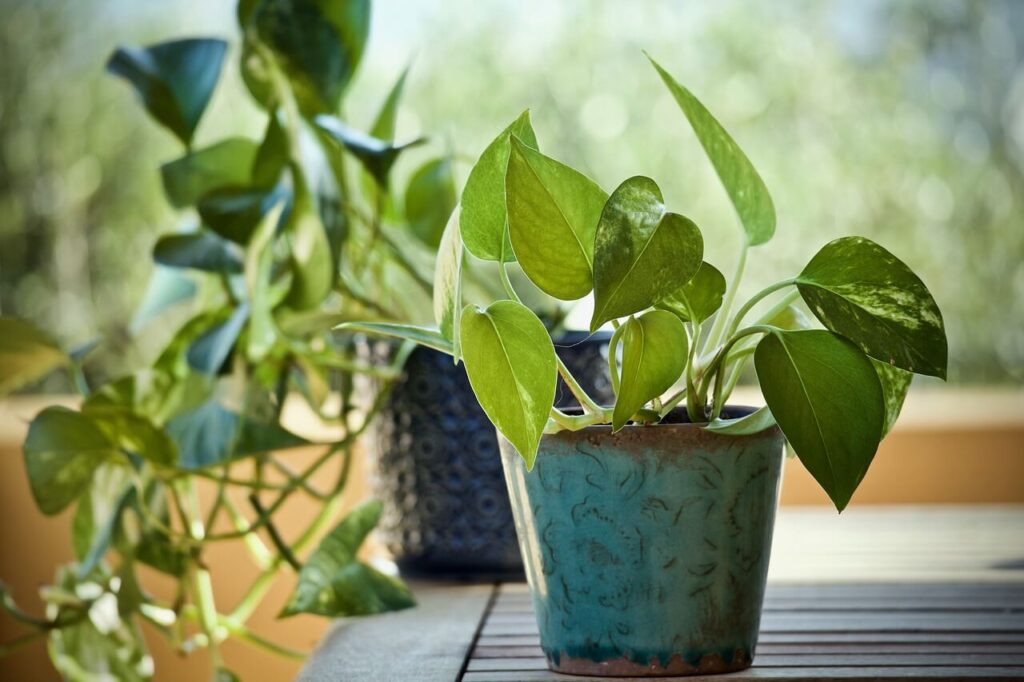What is a Pothos Plant?
The scientific name of the plant known as pothos is Epipremnum aureum, however you might know it by its more commonly used names like Devil’s Ivy, Golden Pothos, or even the Jade Plant. Being part of the Araceae family Pothos plants are indigenous to tropical areas in Southeast Asia and French Polynesia. Their capacity to adapt to a variety of situations makes them a favorite by indoor plant lovers.

Pothos plants are distinguished in the hearts-shaped leaves that are available in an amazing variety of colors, including stunning yellows and vibrant greens. Certain varieties, such as that of Queen of Marble Queen have stunning variation, adding visual appeal to any area. The hardy plants usually feature the vine or trailing pattern of growth, which makes them ideal for hanging baskets and shelves that can be swaying stunningly.
The most attractive feature of the plant is its adaptability in terms of light. Pothos excel in dim light conditions, however they also thrive in light that is indirect and bright. The flexibility of their growth makes them ideal to be used in a variety of places within your home, no matter if it’s the cozy corner that has limited sunlight or a bright window.
Soil Type.
Selecting the best soil is vital to the well-being and longevity of the pothos.
Gardner prefer an Aroid mix that has the best drainage and aeration. This will ensure that the roots of my pothos remain well-nourished and content.
Watering Needs
In terms of watering pothos plants are low maintenance. They like that their dirt dry between waterings, which is why it’s crucial to test the level of moisture prior to adding water. Overwatering can cause root rot, which does a frequent issue for us, so always be in the direction of caution. The most effective guideline is to water whenever the soil’s top inch is dry.
Temperature Preferences.
Pothos Plants thrive within temperatures between 65degF-85degF (18degC between 29 and 35degC). They are tolerant of cold drafts as well as sudden temperatures, which is why it’s recommended to keep them out of doors and windows that could expose them to cold drafts.
Humidity Levels.
Pothos are adaptable, but they can be tolerant of medium to very high levels. If you reside in a dry area, it is worth misting your plant often or placing the plant in an area area where humidity levels are typically higher. This small tip could help to increase the growth of your plant and keep the leaves beautiful and vibrant.
The most exciting aspects of taking care of pothos is their easy proliferative ability. It is possible to create new plants by using cut stems. Simply slice a healthy, good-looking stem, using a handful of leaves, put it in soil or water, and observe it develop! Propagation by water is a popular method and you can observe the roots grow prior to transferring them into soil.
Conclusion.
Ultimately, the Pothos plant is the ideal option for any home for the following reasons.
- This plant is popular in the USA.
- Beautiful appearance.
- Easy care requirements.
- Air-purifying ability.
FAQs.
When do I water my pothos?
When you see that the top of the soil is dry, add water, but it is not better to overwater.
Does the pothos plant grow in low light in indoor houses?
yes, the pothos plant grows in low light but will grow better in bright, indirect sunlight
is pothos plant toxic to Dogs?
It is true that pothos plant is poisonous to cats and dogs. The plant contains Calcium oxalate crystals, which are insoluble that can cause irritation and discomfort if consumed. If a cat or dog chews on or eats a piece of the plant crystals can result in: the following symptoms: difficult taking a swallow, Oral irritation and vomiting. (burning or irritation on the tongue, mouth and lips)
In extreme cases, swelling of the throat or tongue can be severe. may cause breathing problems.
Reference : (Are Pothos Toxic to Cats? Vet-Verified Facts & Information – Catster)
While pothos plant poisoning isn’t often fatal, it can cause significant discomfort for your pet. If you suspect your pet has consumed any part or plant, you need to inform your veterinarian promptly. Fresh water can aid in alleviating some irritation, but professional treatment may be necessary depending on the severe the symptoms.
To ensure your pet’s security the best choice is to place pothos plant out from the range of the pet, or ensure they are kept out of your home throughout the day.
